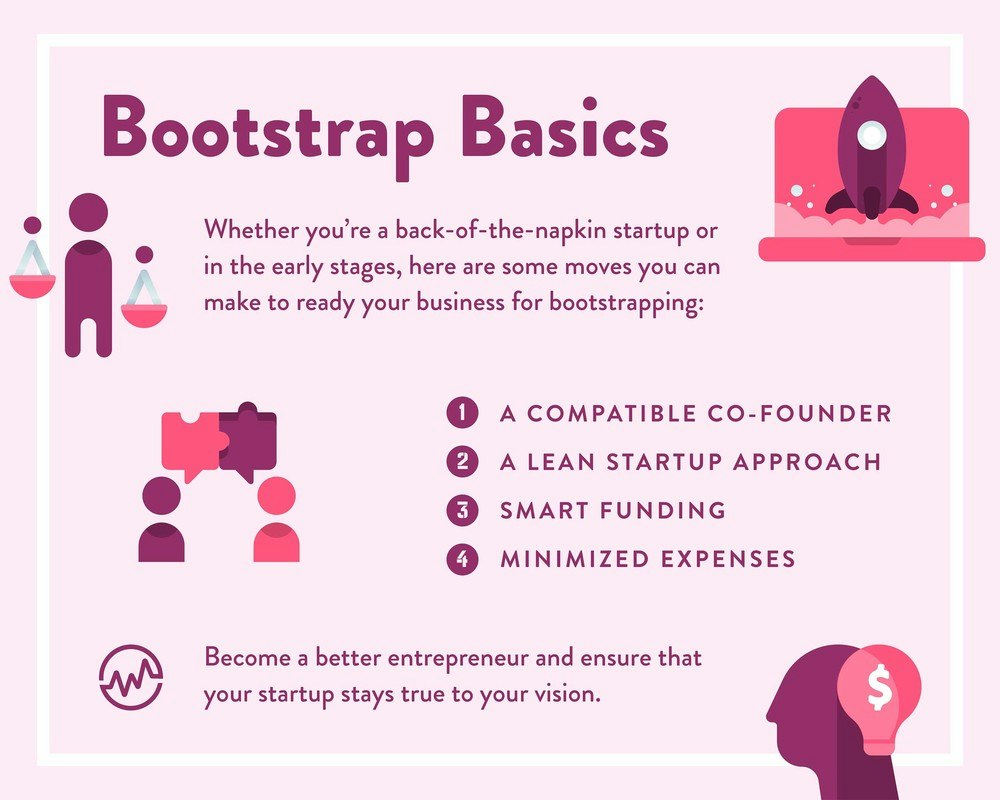The three stages of a bootstrapped start-up – StartupSmart
Building a start-up is a methodical process that can often feel overwhelming. A start-up can be split into three distinct stages. Each stage has unique challenges, time frames and costs. Start-ups have limited resources, so it is important to focus your resources on each stage as the idea evolves.
The following applies to software based businesses, and most particularly web and mobile software businesses.
1. Product Build Stage
The product building stage is all about creating a minimum viable product that you can take to market and use to learn. At this stage much of your decision-making is based on hunches and intuition.
This phase can take anywhere from three to nine months (sometime longer) depending on what it is you are creating and it is usually the founding team who are responsible for building the product.
A strong founding team can be a team of two, plus some early hires. At this stage, the business looks scrappy from outside. Your team are pulling all-nighters, coding and building the product.
At this stage, the people you want on your team are engineers, a user interface designer and a product manager: Anything more than this is a waste of money. You are not ready for business development or sales just yet. You have nothing to sell.
During this stage a prudent founder will speak with potential customers at a high level and show them what they are planning to release to market. This might be via a PowerPoint presentation, screenshots of what is being built, or a prototype/demo that is incomplete.
The idea here is to learn from your potential customers and build their feedback into your product so that it has a higher chance of reaching product/market/fit.
This stage of the start-up is funded by a seed round, or the founder’s personal capital.
2. Building Usage Stage
By this stage, you should have a product that you can take to early customers and it should be tested and working in a reliable manner.
Once you’ve achieved this, you now have a foundation of a product that you can iterate on based on more feedback. Incremental updates and feedback can be built into your product relatively easily.
This stage is all about getting people to know you exist and getting users to sign up and use your service. It is about proving to yourself and potential investors that the product you are building has market fit. This means that people are willing to either sign up to your service if it’s free (and use it) or, more importantly, that customers might be prepared to pay for your service.
At this stage you can bring in a community manager and business development person. However, if the founders have time and are not further developing the product, they should get out there and promote the service by speaking with customers and creating buzz online. They should be blogging, addressing relevant audiences at events, and pushing for as much PR as possible so people know you exist.
Whether you hire additional staff at this stage depends on the financial situation of your start-up. My advice is to stay as lean as possible at this stage and learn as much as you can from your new customers. You find that 90% of the time what you think they want in a product is not exactly what they want and you’ll have to iterate to make the product fit their requirements.
This doesn’t mean “pivoting”. A pivot is when you can’t find product market fit at all, and you need to make a drastic departure from your original plans. At this stage, you might be 15 degrees off course, and you’ll need to add or modify some features to get back on course.
This stage can take six to 12 months and should not be rushed. Hopefully you have a service capable of generating revenue or high volumes of signups and you should begin to build data around what works in terms of marketing and converting customers. You should also be learning what markets to chase.
3. Scaling the Business
Once you’ve found a product/market/fit and there is a clear demand for what you are doing, you can get fat.
You can do a big round of funding and hire a team to take things to the next level – if that is what you want. Not every founder wants to answer to a VC or the like.
In this case, you can grow organically. The scaling stage is all about magnifying what you’ve learnt during the “Building Usage” stage.
It’s about signing up as many customers as you can who are similar to those that are already using the product, and deploying a team to go after them and build the business out based on what you know works. It is also about hiring the right engineers to ensure that your platform can handle the additional capacity.
This is an ongoing process. Along with scaling, you should be using the data you are collecting to refine your business.
Decisions at this stage should be data-driven not hunch-driven and a strong feedback loop should be in place that enables your product managers to continue adding features and functions that improve the service and deliver value to your users.
Building a start-up is a methodical process and each stage takes time. Each of these stages must occur in succession. It is very difficult to sell a product until it is built, and if you try scale quickly then you’ll end up burning cash without a product market fit.

